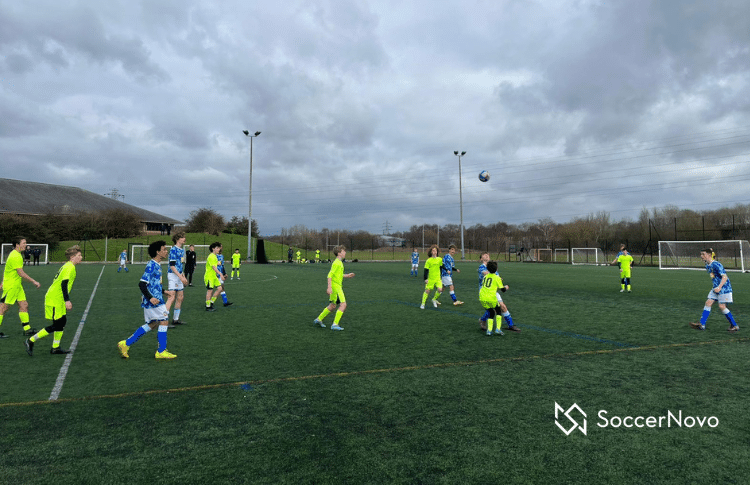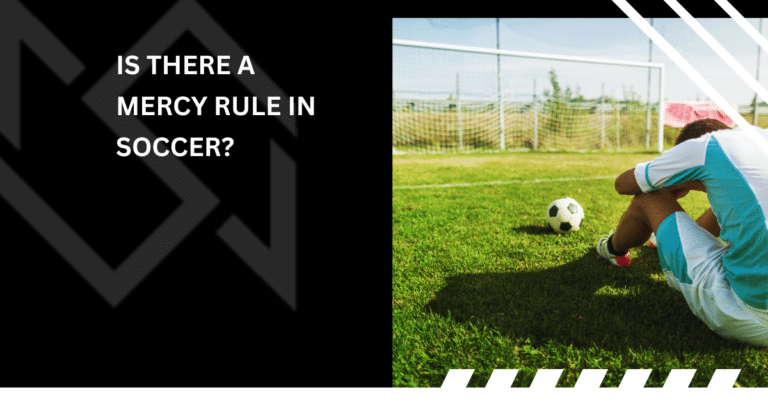Why Do Soccer Players Fake Injuries?
If you are an avid fan of soccer, you may recall Neymar Jr. in the 2018 FIFA World Cup “faking” multiple injuries during the later rounds. For many fans, it made them ask around, “why do soccer players fake injuries?”
There’s several reasons why soccer players fake their injuries. First, soccer players are guilty of deliberately faking injuries as doing so can provide them with a great advantage – usually in the form of a free kick for their team.
Some also do it as they know that it can frustrate the opposing team and maybe distract the other players.
Others will do it so they can waste game time on the clock or disrupt the flow of the game.
If you are interested to know what prompts even the most experienced soccer players to fake injuries while playing, continue reading this article.
Terms Used for Fake Soccer Injuries
There are a few words used on the field of soccer to describe the incidence of faking an injury.
One is flopping, which is commonly used here in the U.S. It is the same term used when exaggerating contact or faking an injury in basketball. On the soccer field, you can use the term flopping when a soccer player exaggerates a fall. This can ruin the flow of the game which is sometimes the intention of the flopper.
Another term is diving, which a lot of soccer fans are familiar with. In fact, famous soccer players, like Neymar Jr. and Cristiano Ronaldo, were named professional divers by some. It is a common movement in soccer that involves faking an injury.
There is also what we call simulating a foul, which is used collectively for those situations that involve faking injuries. When you simulate a foul, it means that you tend to exaggerate a situation.
Of course, the most commonly used term is faking an injury, which often describes players who flop or dive while playing soccer. At the same time, they roll around on the ground in “excruciating pain.” In many cases, these players get up after a minute and play like nothing happened.
Top Reasons for Faking Soccer Injuries
In general, soccer players fake an injury to get an advantage over the other players or teams. For you to get a more detailed explanation of this, here are the top reasons why soccer players do it:
Issuance of the yellow or red card
Faking an injury may prompt the referee to give out a yellow or even a red card. Obviously, when you can convince a ref to dish out a red card for the other team then you get a great advantage for the rest of the match because they’ll be down a player.
If the referee issues a yellow card to an opponent, your team can also benefit from it. The recipient of the yellow card will start to be more cautious for the remainder of the game.
Helps Regain Possession
Long periods of possession may be extremely frustrating for the defending team. As a matter of fact, you can find soccer teams, like Manchester City and Barcelona, who like to play soccer’s Tiki Taka style. The reason can be traced back to its simple meaning, which is to maintain possession until players scored a goal.
You can break the long possessions by stimulating a foul. Once the foul is given, you get the chance to regain possession for your team while the players on the opposing team may receive a card or at least become frustrated by the call.
In most cases, this is a technique often used by soccer teams who wish to break the opposing team’s momentum, especially if they have dominated possession for a large portion of the game.
To Obtain Penalty or Free Kicks
This is a common reason why players simulate an injury. If your team gets a free kick, it can put you in an advantageous position as it can have a major and positive impact on your entire game.
A penalty or free kick can often result in a goal. If it’s a close match, this can be the difference.
Some of the more veteran and smart international players may even deliberately dive into the penalty box of the opposition. Most of these players do it as a means of convincing the referee that they deserve the penalty kick. Now, my question to you… “is it smart or is it cheating?”
Exaggerate Contact
One wrong decision from the referee can change everything in a soccer match. When players exaggerate fouls, it can be difficult for a referee to determine what is a play to call or play-on.
Even with the presence of a Video Assistant Referee (VAR) in the majority of today’s games, which is a great advancement when it comes to preventing the faking of fouls, the system is still far from perfect.
Some soccer players may even end up failing to get the potential free penalty or kick if they try to stay on their feet and continue playing even after a foul.
The fact that the players did not fall or go down may cause the referee to be unable to notice that there is indeed a foul. This may lead to the player getting nothing in return for their honest effort. This is where exaggerating contact comes in…
A trend in soccer nowadays involves soccer players exaggerating contact as a means of ensuring that officials make the correct call.
The problem with exaggerating contact is that it tends to blur the lines between illegal and fair clashes. This prompted many debates regarding what can be classified as a foul and which one is not.
To Stop Fast Breaks
Based on the statements of IFAB (International Football Association Board), it is mandatory to stop the game once there is a player who gets seriously injured. This is to ensure a seriously injured player will be removed safely from the soccer field to receive appropriate treatment.
Note, though, that most referees are also advised to allow the game to continue unless it stops naturally. Some referees will let the play go if there is an advantage.
Ultimately, the referee will be the one who will judge the level of injury during the incident, so faking an injury could be effective or ineffective.
Gain Additional Rest Time
Despite the exceptional conditioning that a lot of soccer players take pride in, they do get tired from time-to-time.
For many hard fought games, it can take a big toll on players, especially in the second half.
If the faking of an injury results in the stoppage of the game, it will provide an opportunity for soccer players to rest a bit.
The problem with this is that your opponent also gets a rest period, which means that it can make the act of faking injuries less impactful for an injured player’s team.
Is Simulation or Faking Soccer Injuries a Punishable Act?
Yes. Simulation or faking an injury is a punishable act in soccer. Players can receive a yellow card if the referee deems it necessary. Players can also get sent off the field if they are multiple offenders of faking an injury to get an advantage.
VAR, despite not being a totally perfect system, is also a big help in catching flopping or exaggerated fouls. Every time the referee awards a team or player a penalty, it is the job of the VAR officials to quickly study the incident to determine if it is indeed the correct call.
If the officials detected the flopping or simulation of a player just to earn and receive a penalty, the referee will be instructed to reverse the decision they made. They may also be asked to reconsider after they rewatch a replay of the incident using the sideline monitor.
It is crucial to note, though, that the VAR process may differ a bit depending on the competition or league that it is looking into.
However, since it is not perfect, the system can’t specifically catch all flopping scenarios. This is why there are still several players who tend to get away when they fake an injury.
Still, the VAR is on its way to becoming even more useful as it continues to evolve. This means that soon enough, it will become the most robust tool designed to offer assistance to referees without the need to disrupt or interrupt the entire game flow.
Should Youth Players Fake Injuries
No! It is unnatural to fake an injury and, therefore, could develop into a new unwanted habit.
Instead, youth soccer players should practice grit, perseverance and relentlessness. These are great qualities to endure to continue playing the game they love. With these intangible skills, players can develop faster.
Of course there will be situations where a player does get really hurt. In this case, players should stay down until the referee blows their whistle to stop play. The coach will then run over the player to check on his or her status and take them off the field for the time being.
Yes, faking an injury may work out in the short-term but it promotes taking “the easy way out.” By getting knocked down and immediately standing back up, it shows your coaches, teammates and parents that you have the drive to become a better player!

Written By: SoccerNovo
SoccerNovo is an independent youth soccer media brand built to help parents, players, and coaches better understand the game and the pathways available in U.S. soccer. Our mission is to make youth soccer simpler, clearer, and more accessible for everyone involved in it.
Let’s connect





